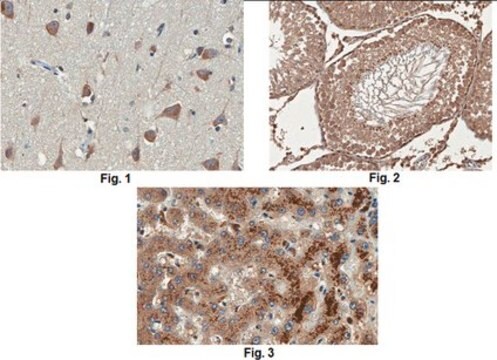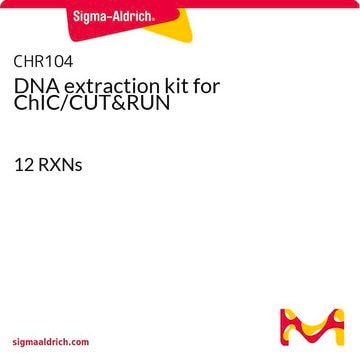3096
Bacterial Xpress Nucleic Acid Extraction Kit
About This Item
Empfohlene Produkte
Hersteller/Markenname
Chemicon®
Qualitätsniveau
Methode(n)
DNA extraction: suitable
Anwendung(en)
sample preparation
Versandbedingung
wet ice
Allgemeine Beschreibung
The BacterialXpress nucleic acid extraction kit is intended for the purification of bacterial DNA from plasma, serum, cerebral spinal fluid, amniotic fluid, tissue, bone marrow, and cell culture. The BacterialXpress kit provides a rapid method for the extraction and purification of amplification-competent nucleic acids; however, the kit does not separate DNA from RNA. The BacterialXpress nucleic acid extraction kit can be used for the extraction and purification of a broad range of bacterial DNA from a variety of sources. However, performance cannot be guaranteed for all bacteria from all sources.
FOR LABORATORY USE ONLY; not for use in diagnostic procedures.
Anwendung
All
Verpackung
Komponenten
Lagerung und Haltbarkeit
WARNINGS AND PRECAUTIONS:
The BacterialXpress nucleic acid extraction reagent removes endogenous nucleases. Certified nuclease-free plasticware should be used whenever possible and work surfaces should be cleaned frequently with a diluted bleach solution to reduce the possibility for nuclease contamination.
Proper aseptic technique should be used when working with potentially infectious material. The BacterialXpress reagent contains a chaotropic salt, which is an irritant and is not compatible with disinfecting agents that contain bleach.
Dispose chaotropic salt containing solutions and plasticware according to your institutions waste-disposal guidelines.
The BacterialXpress reagent contains chaotropic salts, which may irritate the skin and damage clothing. As with any extraction procedure, use gloves, a laboratory coat and safety goggles. Avoid breathing vapors. In case of contact, immediately flush eyes or skin with a large amount of saline or water for at least 15 minutes.
DO NOT ALLOW THE EXTRACTION REAGENT TO COME IN CONTACT WITH BLEACH.
Rechtliche Hinweise
Haftungsausschluss
General Lab Use
Signalwort
Danger
H-Sätze
Gefahreneinstufungen
Acute Tox. 4 Dermal - Acute Tox. 4 Inhalation - Acute Tox. 4 Oral - Aquatic Chronic 3 - Eye Dam. 1 - Skin Corr. 1C
Zusätzliche Gefahrenhinweise
Lagerklassenschlüssel
8A - Combustible corrosive hazardous materials
WGK
WGK 2
Analysenzertifikate (COA)
Suchen Sie nach Analysenzertifikate (COA), indem Sie die Lot-/Chargennummer des Produkts eingeben. Lot- und Chargennummern sind auf dem Produktetikett hinter den Wörtern ‘Lot’ oder ‘Batch’ (Lot oder Charge) zu finden.
Besitzen Sie dieses Produkt bereits?
In der Dokumentenbibliothek finden Sie die Dokumentation zu den Produkten, die Sie kürzlich erworben haben.
Unser Team von Wissenschaftlern verfügt über Erfahrung in allen Forschungsbereichen einschließlich Life Science, Materialwissenschaften, chemischer Synthese, Chromatographie, Analytik und vielen mehr..
Setzen Sie sich mit dem technischen Dienst in Verbindung.








